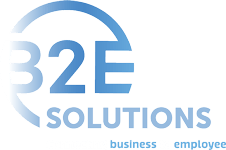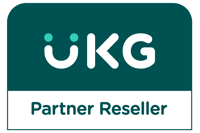From the Rubik’s cube of workforce challenges posed by the pandemic, to “the Great Resignation,” which drove more than 48 million to leave their jobs last year, it’s never been a tougher time to be a Human Resources professional.
So how are industry leaders responding to the monumental HR challenges of today?
Recently, we sought to find out. In a 30-minute webinar, two veteran players in the human resources space, Courtney Kettleson Sales Manager at B2E Solutions, and Dustin McClone, President and CEO of McClone Insurance, highlighted five ways that HR leaders are winning the war for talent and creating an environment where employees want to work.
Click below to view the webinar recording and then keep reading for an overview of the webinar and additional insights:
Trend 1: Cultivating Gratitude
Nurturing a culture that honors employee contributions
One of the most frequently cited reasons for the massive job turnover of the past year is that employees feel undervalued and unappreciated. “Employees don’t want to feel like a number,” shared Dustin during the webinar. “Because of this, top HR practices are taking note and taking steps to ensure that their employees feel appreciated and respected.”
From honoring employee achievements, to thoughtfully responding to staff input, to choosing leaders who truly value staff concerns, business leaders are making moves to ensure that gratitude is top of mind throughout their organizations.
For many organizations, nurturing a gratitude-driven culture starts with choosing managers who can do more than talk about “cultivating gratitude,” but actually demonstrate appreciation through their actions.
Some top organizations use tools, such as a talent management solution, to access the data and intelligence they need to identify best-fit employees that score well in areas indicating they have the required soft skills to cultivate gratitude. According to Dustin, organizations have found that these types of analytical tools are helpful, adding that “just because someone is a great salesperson does not always signal they're going to be a great manager in a gratitude-driven culture.”
Trend 2: Do It For Them
Using automation to improve the work experience
“It’s no longer a question of if you should have technologies to automate HR tasks,” said Dustin. “It’s a must-have.”
According to Dustin, top performing organizations are constantly searching for ways to automate HR tasks because this is what gives them a competitive advantage. Take onboarding as one example. While some organizations still have employees spending their first day or days on the job filling out reams of onboarding paperwork, employees at top-performing organizations typically complete their W-4, read through their employee handbook and go through certain training before their first day on the job.
“This ensures employees feel welcomed and prepared on their first day,” added Courtney. “And it sends a positive message to new employees that they are working in an environment that values their time.”
Meanwhile, there are benefits for HR staff as well. Automation means that rather than spending precious onboarding time chasing down forms and signatures, HR teams can put in the time where it matters most — by engaging employees one-on-one.
Trend 3: Benefits That Are Actually Beneficial
And the importance of a benefits communications program
In the war for talent, employers have long known that one of their most important strategies is a strong benefits package.
But according to Dustin and Courtney, what distinguishes the industry leaders from everyone else is their knowledge that it’s more than just enhancements to benefits — increased parental leave, a reduction in health care premiums, or a generous dental plan — that helps them recruit and retain talent.
While some HR practices think their work stops at the selection of their benefits packages, top performers make benefits as well known, easy to understand, and as user-friendly as possible.
Whether it’s giving employees access to their benefits information from their mobile device, or adopting a tool that allows employees to easily compare benefits plans and make open enrollment choices, top HR practices help employees make better use of their benefits, and make smarter decisions about their choices.
A better benefits communications program is a winner with employees, increasing the value of the benefits as a recruitment and retention tool. Yet it also helps HR staff. Instead of spending hours chasing down forms from employees, they can focus their time and energy on providing higher-value engagements.
Trend 4: No-Hold-Back Feedback
Gathering valuable employee feedback requires strategy, consistency and time
Do your employees feel like they are being treated fairly? Are they happy with the culture at your company? The leadership? The training? Human resources professionals crave answers to these questions because they know the key to building a happier, more engaged workforce is feedback.
But, what differentiates top HR practices from their peers is their insistence on better feedback — raw, unfiltered, tell-it-to-me-straight feedback.
In the digital age, tools such as Survey Monkey have made survey creation and feedback collection easier than ever. But many employee surveys fail to deliver the desired feedback. Sometimes it’s because the questions aren’t well thought out, but often it’s because employees aren’t comfortable sharing their honest opinions with their bosses.
That’s why top organizations often turn to consultants to conduct employee surveys. Employees are far more comfortable sharing warts-and-all feedback with a third party. “A lot of times valuable feedback is just sitting dormant,” said Courtney. “Sometimes simply having somebody from the outside ask the very same questions as you would ask internally, can make a huge difference in accessing these insights.”
But Dustin noted that many organizations in search of feedback recognize that, despite the benefits of a well-constructed survey, there is often no replacement for a one-on-one interview. Organizations create space and systems to have time for one-on-ones because they know that there is tremendous value to the unrestrained feedback that can come from these discussions.
Trend 5: A Human Capital Management (HCM) Solution
That’s unified, full-suite and meets your unique needs
As any HR professional knows, managing employees’ information can be inefficient, time-consuming, and frustrating. With one technology for timekeeping, another technology for onboarding, another one for payroll management, and on and on — many organizations are ditching one-off tools for a unified, full-suite human capital management (HCM) solution that has all the products they need in one.
A key reason a unified, full-suite HCM solution should be the standard is because it enables critical payroll, time and labor, human resources and talent management tools to “talk” to each other — reducing redundant data entry and automating the flow of information between products. Think about it this way. If an employee clocks in or out, selects a benefits plan, or completes the onboarding process, this data is captured and is leveraged throughout the system to auto-populate fields, inform accurate paychecks, monitor compliance and more. All of this information becomes part of one employee record that feeds the various products within the HCM tool.
But getting an HCM tool isn’t necessarily the end-all solution for every organization. According to Dustin, some of the world’s largest HCM providers have more than 50% non-service usage. “That means companies are buying the technology but they’re not using it,” explained Dustin. “Imagine buying a computer and not even being able to turn on the power button?”
That’s why industry leaders — those who understand that HCM is the cornerstone of any top-tier HR practice — choose an HCM tool that not only meets their business needs, but also provides the functionality and support to ensure that HR teams (and employees throughout the organization) will actually use the system.
During the webinar, Dustin and Courtney walked through a checklist of questions to consider when evaluating an HCM provider. They advised organizations to ask questions about an HCM system’s functionality, explore whether the platform is truly unified, and ask tough questions about customer support and vendor qualifications.
“The implementation process is hugely important with an HCM solution,” said Courtney. “At B2E Solutions, we go through an in-depth implementation process with our clients. It’s an intensive process that’s led by a dedicated team made up of product and industry experts and specialists. It’s not a siloed approach; we work as a team and ask a lot of exploratory questions to ensure that absolutely nothing is overlooked and that our clients are set up for success from the beginning. It’s great for many organizations, but it’s not a fit for everyone. What’s critical is to find an HCM that fits your unique needs.”
There is so much potential to leverage the data and tools available to automate HR processes and inform smarter decision-making, but to take advantage of the power of these products, it’s no overstatement to say that it’s become essential to have the right unified, full-suite HCM tool..
To schedule a demo of B2E Solutions’ unified, full-suite HCM tool, Workforce Ready, please contact us today.










